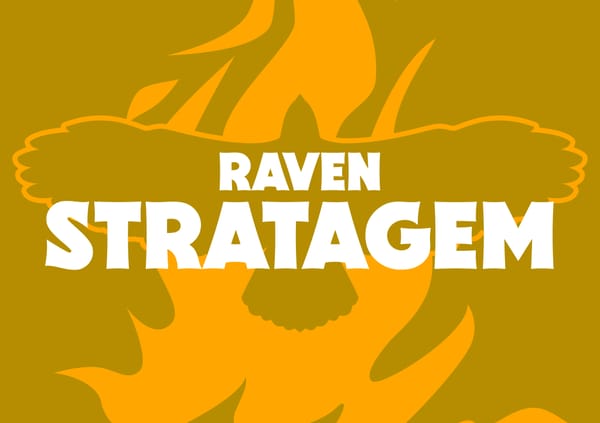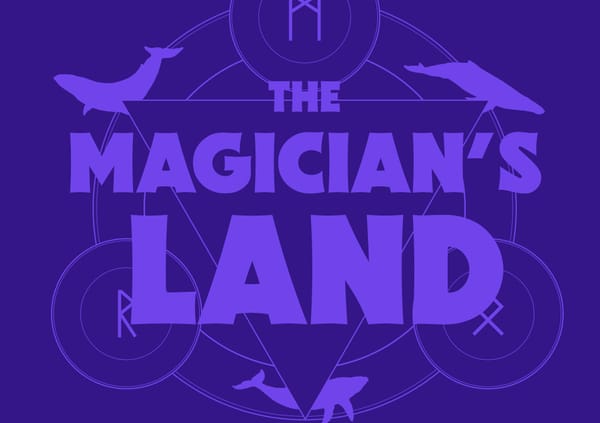Everything you need to know about Tamsyn Muir’s The Locked Tomb series
Often described as “lesbian necromancers in space”, Tamsyn Muir’s amazing debut instantly became one of Tordotcom’s most beloved series.

When I first decided to get back into fantasy in 2021, two books instantly grabbed my attention: A Memory Called Empire by Arkady Martine, and Gideon the Ninth, the first part of The Locked Tomb series by Tamsyn Muir.
The Locked Tomb is a series of science fantasy books published by Tordotcom Publishing. Each book focuses on a different titular character, with the first two books being Gideon the Ninth and Harrow the Ninth.
Both A Memory Called Empire and Gideon the Ninth won and were shortlisted for multiple of the most well-known science fiction and fantasy awards in 2020, and while both of them are amazing books, Gideon the Ninth in particular is so imaginative and over-the-top that I cannot recommend it enough.
Ever since I first read it, I’ve been obsessing over every minute detail of it. I have pored over the pages of both Gideon and Harrow the Ninth, read every Tamsyn Muir interview there is, devoured every fan theory and Wiki page…
I know everything that you will ever need to know about The Locked Tomb, and I’m giving it to you here:
The blurb
Let’s get the elephant in the room out of the way first. If you’ve heard anything about this series, chances are you’ve heard it being described as “lesbian necromancers in space” (the only thing close enough to compete with the “football playing king in space with a mustache”). This is taken directly from the blurb on the cover of Gideon the Ninth, and aside from hooking you right in, it also tells you a lot about the series, mainly that…
It’s a genre bender
The most obvious takeaway here is that the books belong in the science fantasy genre, with the futuristic space setting and necromancy magic that is not based on actual science (although in-universe, it totally is). More broadly than that, the series combines elements of horror, mystery, and even YA (yes, I know Young Adult isn’t technically a genre, but it does have enough of its own tropes, conventions, and archetypes to be considered a genre unto itself by some).
But even with such a wide range of themes and moods, the series manages to create its own kind of weird logic that allows it to stay consistent even when there are jokes in scenes where there’s talk about murdering babies. One of the elements that allow it to do this is the deep, fleshed-out lore and a universe that may be not unlike our own world in the far, far future…
A Universe Reborn
The story takes place in a world that was destroyed and then brought back from the dead, giving birth to the first necromancers.
The whole story starts some ten thousand years ago, when the King of Nine Renewals, our Kindly Prince of Death, the Necrolord Prime, the Emperor Undying (yes, these are all the names God is called in the books, and sometimes more than one of these is used in the same sentence) the only man left alive, resurrected the Nine Houses, ushering in a new era of necromancy.
The Emperor, along with His Lyctors, the necromantic disciples whom He taught the secrets to becoming immortal and powerful, almost like Himself, then left the Nine Houses to wage war on the enemies of the Empire.
Now, ten thousand years later, for the first time since the first Lyctors were created, the Emperor is giving the scions of the noble Houses a chance to become Lyctors themselves and join Him in eternity.
Always two there are…
Gideon the Ninth features Gideon, a dirty-magazine-loving swordfighter, and Harrow, the heir of the House of the Ninth, an unlikely duet of cavalier and necromancer, who attend the Emperor’s Lyctor trials together.
Due to the intricacies of the magic system, performing necromantic rites exerts the necromancers, as they draw on thanergy, the energy of death. This is why the cavalier system was invented:
Cavaliers are skilled swordfighters–usually wielding rapiers–who act as bodyguards and often complementary counterparts to their necromancers.
This makes for an awesome dynamic between a necromancer and their cavalier, and for great exploration of character relationships.
Memes and Magic
Another way to describe the series would be to say it’s about memes and magic. The books are bursting with meme potential–aside from all Emperor’s names, there’s also a list of dramatic names that Gideon calls Harrow, my favorites of the bunch being:
· Bone Empress
· Gloom Mistress
· Tenebrous Overlord
· Midnight Hagette
· and many others.
The second book even features the classic “Hi X, I’m Dad!” joke, and Tamsyn Muir herself has stated that there are many memes that are inside jokes between her and her friends, but also that there were some memes that she had to cut because “they were going to age the novel hopelessly”.
The Hunger Games was never this dark
While the series successfully incorporates many elements of YA fiction, it is not afraid to delve into the dark, dark, dark, and I mean DARK dark subjects such as child genocide and murdering planets (as in celestial bodies planets) to enable necromancers to feed off their energy.
The best comparison I can think of is the Keep Summer Safe scene from Rick and Morty. Tamsyn Muir creates these really high concept ideas that she applies in a gleefully evil and dark manner.
Still, the Locked Tomb does take some cues from The Hunger Games and its lookalikes and incorporates them into its mythos quite successfully. The Nine Houses, for example, are masterfully executed factions, where each house has its implied identity and role in the Empire, and they each have their own branding in the way the characters from each house are named.
A thing that The Locked Tomb does much better than The Hunger Games is juggle so many unique and fleshed-out characters into a compelling story, with almost no important character moments happening off-screen.
There’s incredible attention to detail
Tamsyn clearly enjoys herself in her writing and loves inserting various references (both classical and internet-era) into her writing. A great example of this would be the name of Palamedes Sextus, the heir to the House of the Sixth, which is a reference to a figure in Ancient Greek mythology credited with inventing dice (as in six-sided playing dice).
There will be four books
Originally, The Locked Tomb was supposed to be a trilogy, with the first two parts coming out in 2019 and 2020 respectively, and the third part called Alecto the Ninth set to come out in 2022. All that changed when Tamsyn Muir’s editor convinced her that the first act of her third book was long enough to be a book of its own.
After my editor got up from his lie-down, he said that he thought that it maybe wasn’t “physically possible” to publish a 300k+ book. He kept saying cowardly shit like “it gets impossible to print and read.”
Thus, Alecto the Ninth, which will likely remain the final book of the series, was pushed to fourth place, with Nona the Ninth suddenly taking place of the third book. Nona the Ninth is set to come out later this year, while the final part of the series is set to come out in 2023.
In addition to the main series of books, Tor.com has also published two short stories from Tamsyn Muir which take place in the same universe, with the first one being called The Mysterious Study of Doctor Sex, because of course it is.
You should read it while it’s fresh
Finally, you should read these while they’re still coming out. Seriously, one of the best parts of the experience of reading this series is the online community. With the series’ heavy emphasis on mystery and organic exposition, there’s a ton of tidbits that fuel wildly entertaining theories–like what is the thing in the Locked Tomb and why is it locked there–and being able to discuss them with other fans of the series and waiting to see which ones are true is one of the greatest gifts of the internet era.





